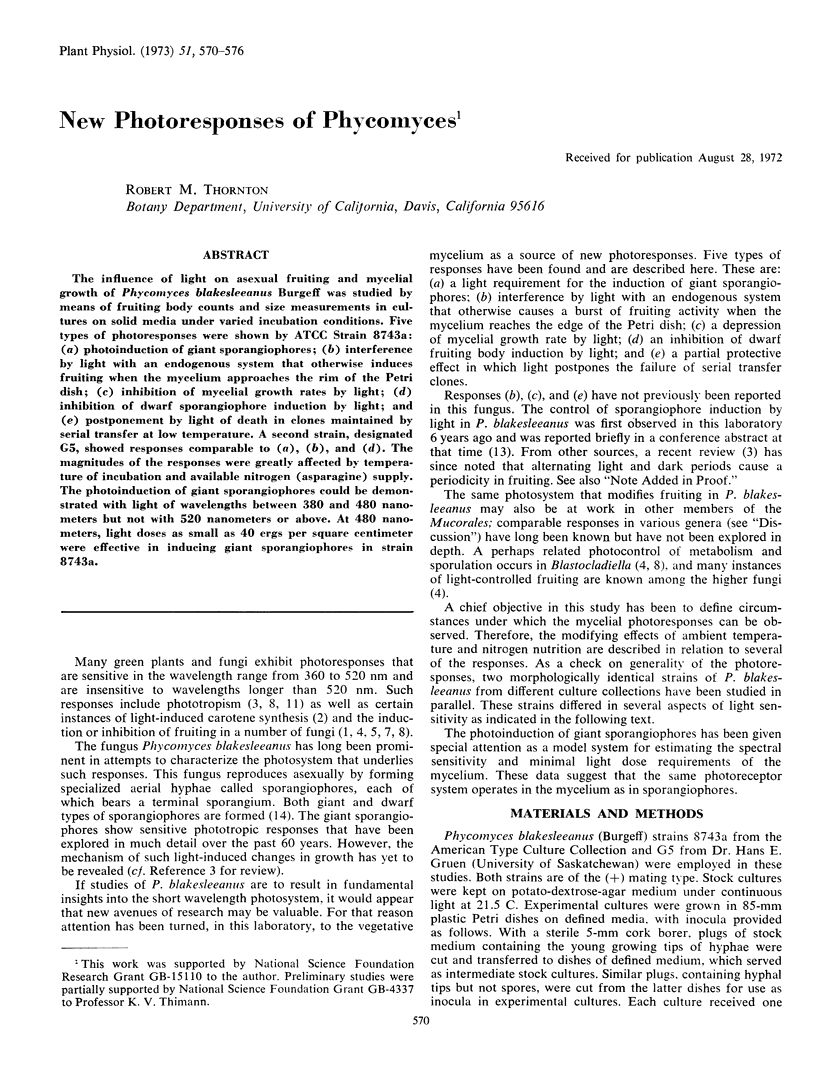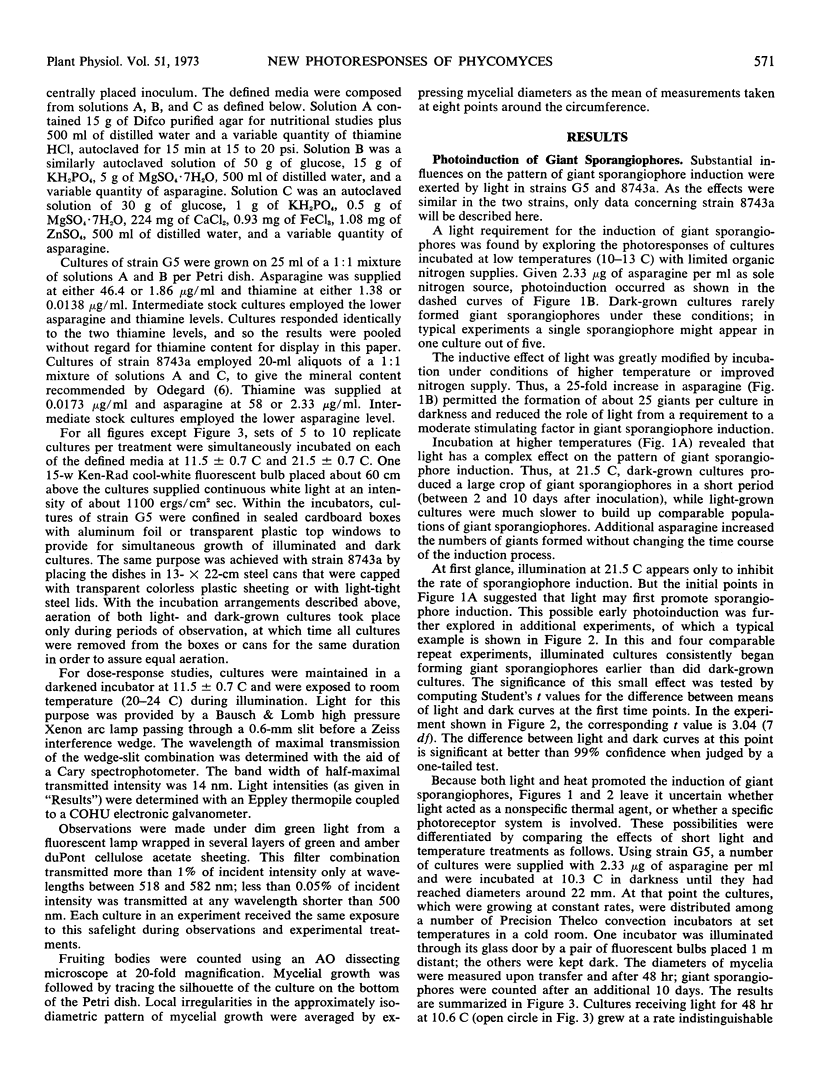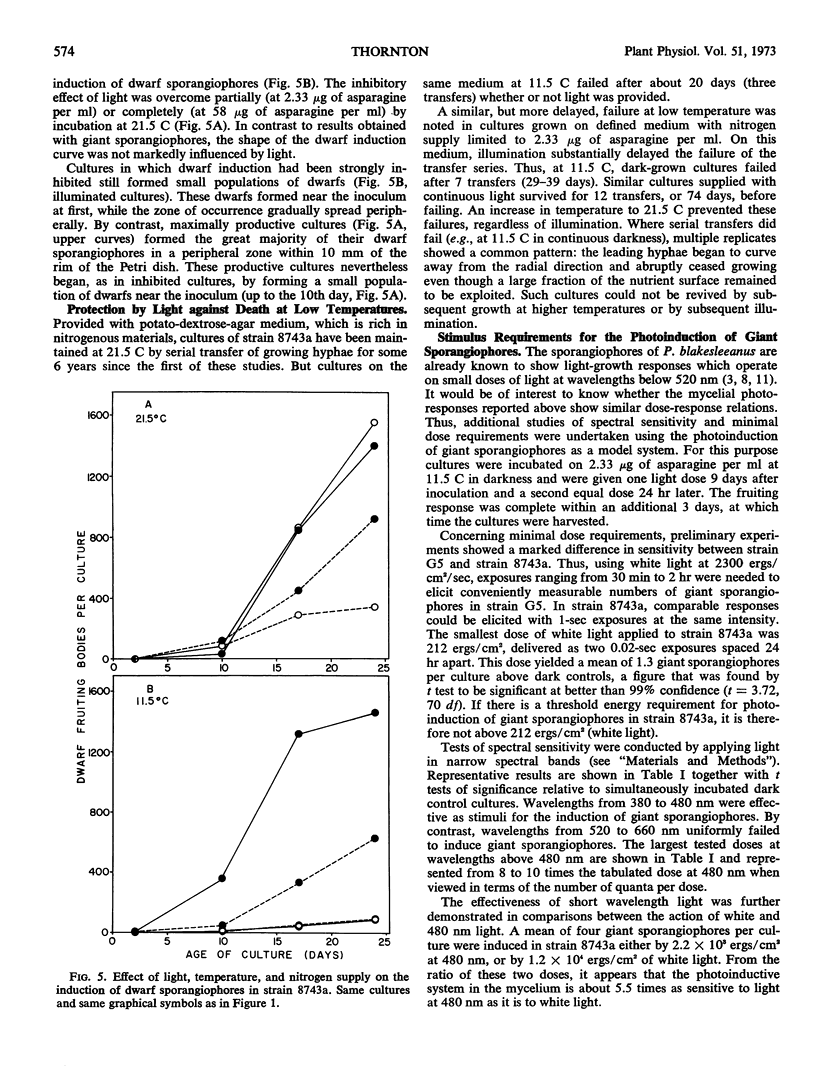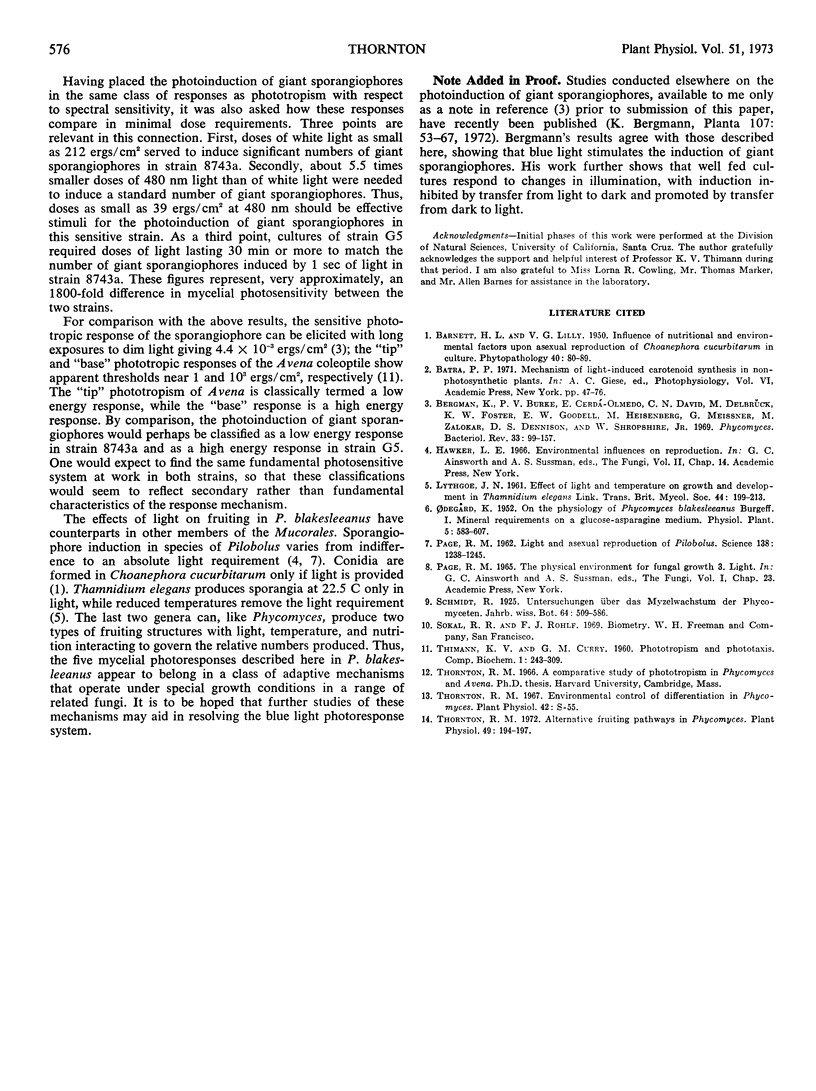Abstract
The influence of light on asexual fruiting and mycelial growth of Phycomyces blakesleeanus Burgeff was studied by means of fruiting body counts and size measurements in cultures on solid media under varied incubation conditions. Five types of photoresponses were shown by ATCC Strain 8743a: (a) photoinduction of giant sporangiophores; (b) interference by light with an endogenous system that otherwise induces fruiting when the mycelium approaches the rim of the Petri dish; (c) inhibition of mycelial growth rates by light; (d) inhibition of dwarf sporangiophore induction by light; and (e) postponement by light of death in clones maintained by serial transfer at low temperature. A second strain, designated G5, showed responses comparable to (a), (b), and (d). The magnitudes of the responses were greatly affected by temperature of incubation and available nitrogen (asparagine) supply. The photoinduction of giant sporangiophores could be demonstrated with light of wavelengths between 380 and 480 nanometers but not with 520 nanometers or above. At 480 nanometers, light doses as small as 40 ergs per square centimeter were effective in inducing giant sporangiophores in strain 8743a.
Full text
PDF






Selected References
These references are in PubMed. This may not be the complete list of references from this article.
- Bergman K., Burke P. V., Cerdá-Olmedo E., David C. N., Delbrück M., Foster K. W., Goodell E. W., Heisenberg M., Meissner G., Zalokar M. Phycomyces. Bacteriol Rev. 1969 Mar;33(1):99–157. doi: 10.1128/br.33.1.99-157.1969. [DOI] [PMC free article] [PubMed] [Google Scholar]
- PAGE R. M. Light and the asexual reproduction of Pilobolus. Science. 1962 Dec 14;138(3546):1238–1245. doi: 10.1126/science.138.3546.1238. [DOI] [PubMed] [Google Scholar]
- Thornton R. M. Alternative fruiting pathways in phycomyces. Plant Physiol. 1972 Feb;49(2):194–197. doi: 10.1104/pp.49.2.194. [DOI] [PMC free article] [PubMed] [Google Scholar]


